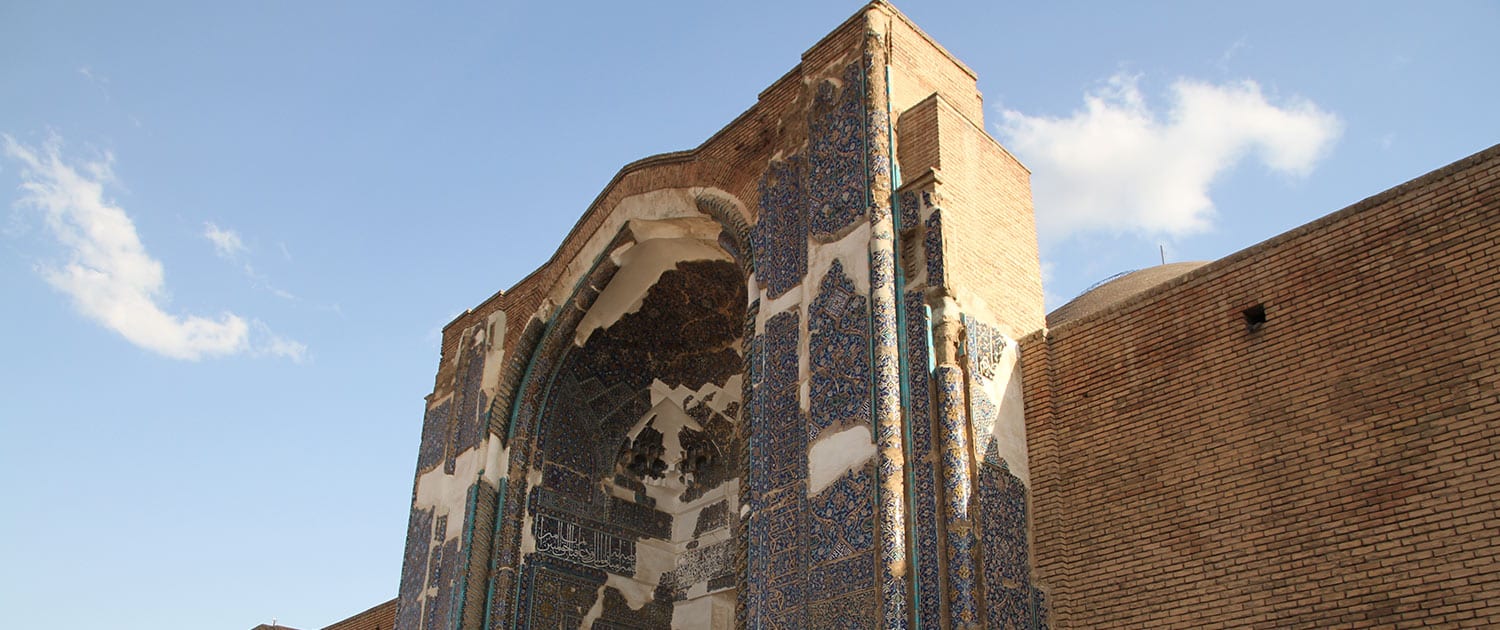Why You Should Visit The Blue Mosque In Tabriz?

The Blue Mosque of Tabriz belongs to the 15th century and it is located in one of the oldest and most historic neighborhoods of Tabriz. This architectural masterpiece is also known as Göy Məscid, Jahanshah Mosque or Mozaffariyeh Mansion. Further those interested in Islamic historical monuments name the Blue Mosque as the Turquoise of the Islamic World.
Contents
Blue Mosque, Tabriz
The only surviving historical monument from the Qaraquyunlus era with its very beautiful and unique architecture is the Blue Mosque of Tabriz. The Blue Mosque of Tabriz belongs to the 15th century and it is located in one of the oldest and most historic neighborhoods of Tabriz. This architectural masterpiece is also known as Göy Məscid, Jahanshah Mosque or Mozaffariyeh Mansion. Further those interested in Islamic historical monuments name the Blue Mosque as the Turquoise of the Islamic World.
The Turquoise of Islam
Abol Mozaffar Jahan Shah, a leader of Qaraquyunlus, was the founder of the Blue Mosque. By observing details of the building and the paintings inside the Blue Mosque a part of the identity, history and civilization of Islam in ancient Tabriz is noticeable. It is one of the four mosques decorated with blue tiles in the world. The name of the Blue Mosque has been chosen based on the color of the facade of this building.

The charming architecture of the Blue Mosque can be considered as a notable sample of Islamic architecture in Iran. Turquoise and azure mosaic tiles, Islamic motifs and modern geometric design are prominent features in the architecture of the Blue Mosque. Despite its many damages over the years and considering its various uses in the past, it has retained its glory and beauty.
Owing to the fact that in the past the Blue Mosque was part of a large complex with different uses, it was titled as Mozaffariyeh Mansion. The tomb of Sultan Jahanshah and his relatives at the end of the nave and in the crypt of the mosque confirms this. For this reason, it was also known as Jahanshah Mosque. Today, these tombs are empty. In 20th century the Blue Mosque in Tabriz was registered in the list of national monuments of Iran.
The history of the Blue Mosque
The Blue Mosque was built during the reign of the Qaraquyunlus in 1400 AD (about 600 years ago) by order of Abu al-Muzaffar Jahanshah, the most powerful king of the Qaraqoyunlus. According to the existing historical narrations, Jahanshah’s wife, “Jan Beg Ghatoon” or “Saleha” his daughter, played an effective role in the construction of the Blue Mosque. According to estimation of some historians estimate the construction of this mosque took about 30 years. Unfortunately many parts of the Blue Mosque were damaged in the earthquake of 1779 AD, which is, about 300 years ago. The domes of the mosque collapsed after the earthquake, and there was no other part left except the entrance and the bases of the mosque. In 1966, Mr.Reza Memaran, a skilled Iranian architect, reconstructed the mosque.

Architecture Features of the Blue Mosque
The Blue Mosque of Tabriz or Mozaffariyeh Mansion is one of the masterpieces of Iranian architecture in the 15thcentury. The architectural style of mosque was Azeri, and the complex of Mozaffariyeh Mansion included mosques, monasteries, courtyards, libraries, and tombs were built.
The Blue Mosque is built with combination of bricks and mosaic tiles, and on the exterior surfaces, rich patterns can be seen. The main building of the mosque is located right in front of the courtyard and facing the qibla. The pillars of the mosque are 12 meters apart and these pillars can be seen on all four sides of the roof. The brick dome on the roof of the mosque was destroyed after the earthquake. In the main courtyard, there are stairs that lead to the porches overlooking the courtyard. The weight bearing of the huge dome of the mosque by the foundations on the four sides of the courtyard was one of the most prominent architectural points of the Blue Mosque at the time of its construction in the 15th century.
In the smaller dome of the Blue Mosque, marble door was installed, which later disappeared. This small dome had built for the tombs at the end of the mosque. All the details of the building in the destroyed part of the Blue Mosque have been obtained from the documents left from the design of this building. The images obtained from Motaraghchi’s painting from and the French Chardin, have provided useful information about the architecture and construction site of this building.

Decorations of the Blue Mosque in Tabriz
Turquoise tiling is the most prominent interior decoration in the Blue Mosque of Tabriz is. Most of the tiles of the Blue Mosque are octagonal in shape; but there are other forms among them. Inside the Blue Mosque, turquoise stones and golden colors can be seen. From the remnant in the nave, it can be seen that marble was used during the construction of the building. The remaining columns in the nave are parallel, and the artifacts left inside the domes show the use of bricks in the construction of the building in the style of Azeri architecture. The calligraphy on the inscriptions was done by the famous 15th century calligrapher, “Nema Allah Al-Bawab”, and the architecture of the building was done under the supervision of “Izz al-Din Qapuchi”. The beauty of the Blue Mosque and the color of the tiles have made this mosque known as the “Turquoise of the Islamic World”.
We recommend you to watch closely the altar mosaics of the mosque with the beautiful mosaics Muqarnas, Islamic designs, and tile work with Turquoise, Persian blue, White, and Golden colors. The Blue Mosque has unique features that call you to visit closely. The best time to visit the Blue Mosque is in the daylight when the sunlight glitters inside the mosque. The colors are pleasant and unique.
Read More




